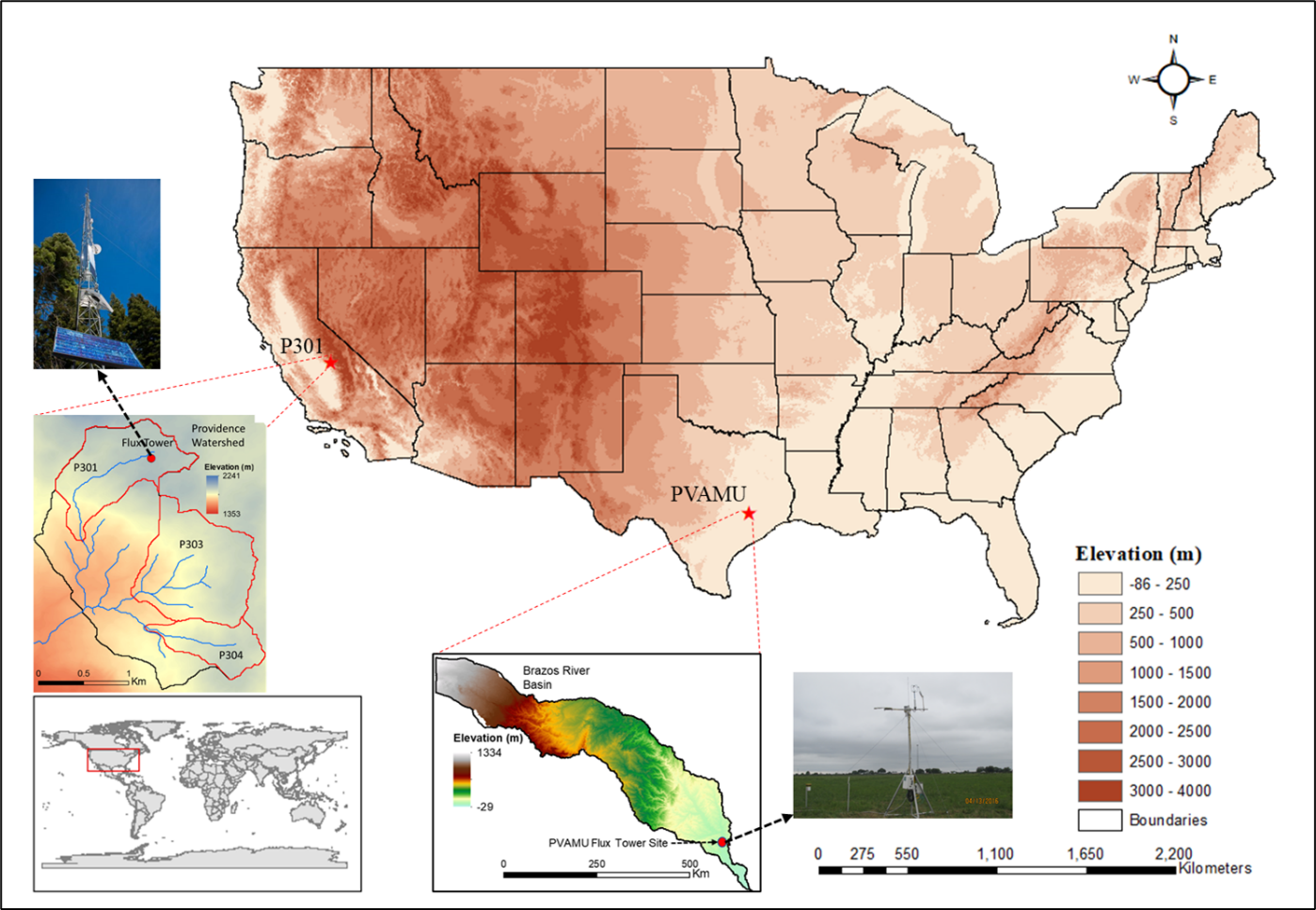October 12 – College of Agriculture and Human Science’s Research Scientist and Associate Professor Ram Ray, Ph.D., evaluates atmospheric and terrestrial effects in the carbon cycle for forest and grassland ecosystems using satellite carbon products and models. This study was conducted at Prairie View, TX, and Sierra Nevada Mountain, CA. Ray and colleagues Muhammad Umair, Ph.D., Daeum Kim, Ph.D., and Minha Choi, Ph.D., found the California site affected due to low precipitation. The site could be vulnerable to climate change due to reduced soil moisture and high vapor pressure deficit during the summer. In contrast, the Texas site had high soil moisture due to frequent and intense rainfall events due to the changing climate. This study helps characterize the carbon flux in forest and grass-dominated landscapes. The research findings have made significant contributions to the plant science, carbon sequestration, eco-hydrologic modeling, and remote sensing.
Abstract
Soil moisture (SM) and vapor pressure deficit (VPD) are key variables that affect the carbon, water, and energy cycles. Very few studies have been conducted to evaluate their impacts on site-specific ecosystems, especially in mountainous regions and plains using an integrated remote sensing and modeling approach. This study used two flux tower sites, P301 (forest–ecosystem), Prairie View A&M University (PVAMU) (grassland–ecosystem) to evaluate gross primary production (GPP), sensible heat flux (H), and latent heat flux (LE). The community land model (CLM4) and soil moisture active passive (SMAP) carbon product were employed and evaluated using the flux tower data from 2016 to 2018. From the CLM4 and SMAP estimation of GPP, the CLM4 showed better accuracy at P301, whereas SMAP performed better at PVAMU. The SMAP overestimated GPP at P301, which could be due to the coarse footprint of SMAP (9×9 km). CLM4 overestimated GPP during the growing season at PVAMU, which could be due to the structural and parametric uncertainties. The H at P301 showed good agreement between the CLM4 results and flux tower measurements. However, H at the PVAMU site was most likely affected by the precipitation. Moreover, at P301, VPD was effective in controlling the carbon and water fluxes (GPP and LE) with a positive partial correlation (p–value < 0.05). However, at PVAMU, SM (terrestrial control) showed substantial control over the fluxes due to year-round precipitation. Overall, the results showed that the California site was affected due to low precipitation and could be vulnerable to climate change due to a reduction in SM and high VPD during the summers. In contrast, the Texas site had high SM due to frequent and intense rainfall events due to the changing climate. For the future study, a detailed analysis of SM and VPD control at regional and global scales for various land cover types is needed.
To read the entire article on Dr. Ray et al.’s research, please visit:
https://www.sciencedirect.com/science/article/pii/S0168192320302896
Ram Ray, Ph.D.
Associate Professor
rayray@pvamu.edu
(936) 261-5094


